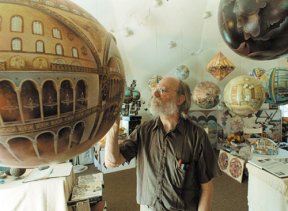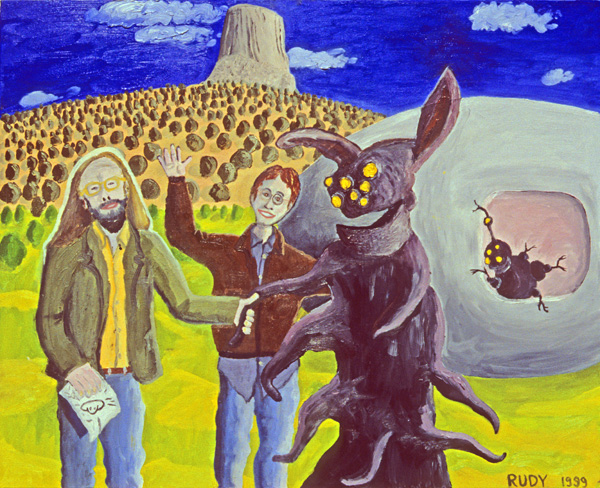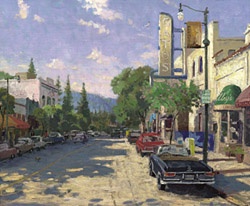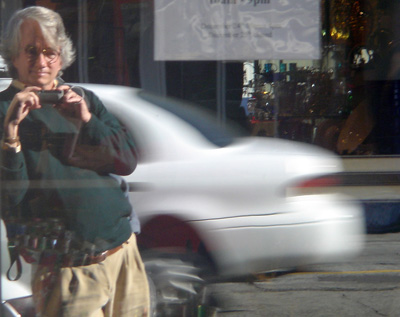There's a nice article about my artist friend Dick Termes in Science News

As I understand it, Termes's painting method consists of getting a spherical canvas, standing in front of it, and painting onto the canvas what you see on the other side of the sphere, in front of you. Termes does not work by painting what is behind him onto the sphere, all the while looking over his shoulder. He paints what is in front of him. Once he has finished a patch corresponding to what is in front of him, how does he add what is, say, to the left of the patch in front of him? He moves around the sphere to the right a little so that he is now looking directly at the area that was formerly to the left. And he rotates the sphere to the right so as to expose the blank part of the sphere canvas to the left of what he already painted.
Mathematically, this is equivalent to central projection of the world onto the inner surface of the sphere, followed by eversion. By eversion I mean this: turn the sphere inside out. This way the correctly projected image which was visible from the inside is now visible from the outside.

I went to visit Dick when I was working on Saucer Wisdom in 1997. The painting of mine shown above depicts Frank Shook, Rudy, and an alien. Recalling this, I just posted my Saucer Wisdom notes, a cool 50,000 words of PDF for your reading pleasure.

Here's a picture of my friend Greg Gibson “being” my Saucer Wisdom hero Frank Shook.















